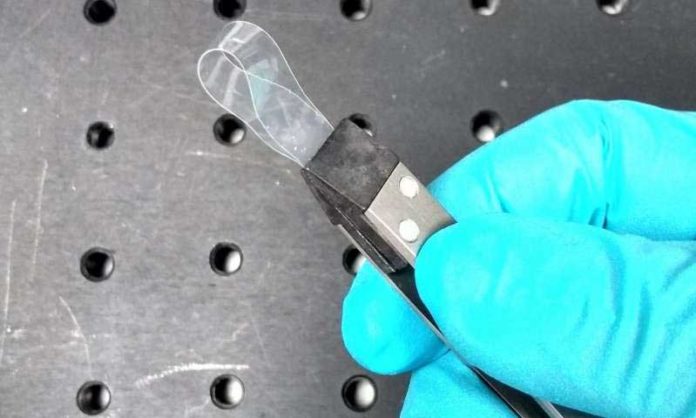Specialists have been effectively inquiring about synthetic auxetic materials for over 30 years. However, they have only been able to create them by organizing regular materials utilizing complex engineering processes, including 3D printing.
These processes are tedious, expensive, and can prompt weaker, porous items.
Now, scientists at the University of Leeds have created the first synthetic material that gets thicker at the molecular level when stretched. This non-porous material has unique and inherent ‘auxetic’ stretching properties.
Dr. Devesh Mistry from the School of Physics and Astronomy said, “This is a really exciting discovery, which will have significant benefits in the future for the development of products with a wide range of applications.”
“This new synthetic material is inherently auxetic on the molecular level and is therefore much simpler to fabricate and avoids the problems usually found with engineered products. But more research is needed to understand exactly how they can be used.”
“When we stretch conventional materials, such as steel bars and rubber bands, they become thinner. Auxetic materials, on the other hand, get thicker.”
“Auxetics are also great at energy absorption and resisting fracture. There may be many potential applications for materials with these properties, including body armor, architecture, and medical equipment. We have already submitted a patent and are talking to industry about the next steps.”
Scientists discovered this material (still unnamed) while studying the properties of Liquid Crystal Elastomers. Liquid crystals are best known for their use in mobile phones and television screens and have both liquid and solid properties. When they are linked with polymer chains to form rubbery networks, they have completely new properties and possible applications.
Professor Helen Gleeson, study co-author and Head of Physics and Astronomy at Leeds, said, “Our results demonstrate a new use for liquid crystals beyond the flat screen monitors and televisions many of us are familiar with. This new synthetic material is a great example of what physics research and exploring the potential of materials such as liquid crystals can discover. Collaboration between scientists with several areas of expertise and the extensive technical facilities we have at Leeds make this kind of exploration and discovery possible.”
“We wanted to be sure the material wouldn’t break down or become porous when stretched to its limits. Our LEMAS center had the tools to do this.”
The details of the material are published in the journal Nature Communications.
